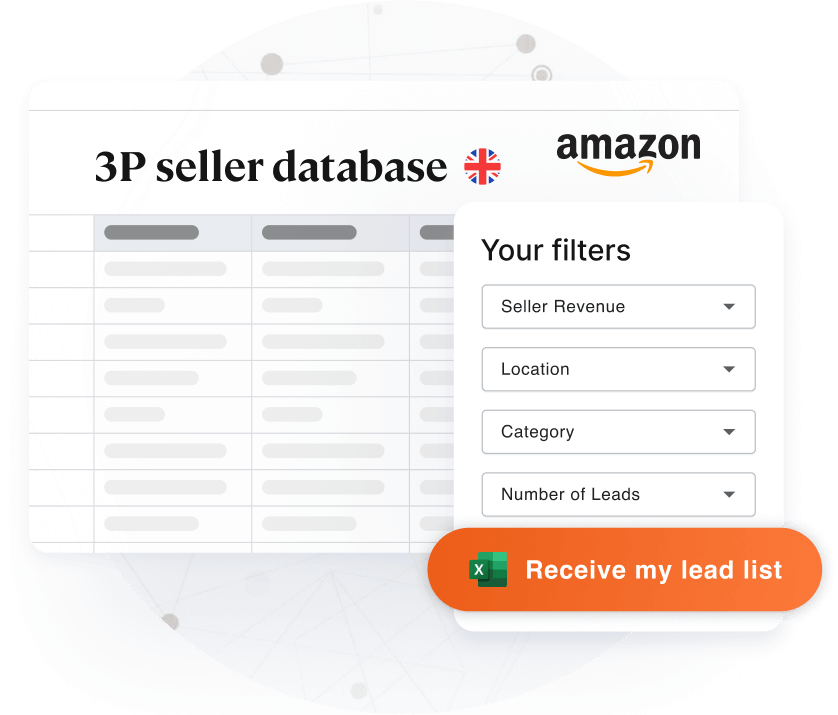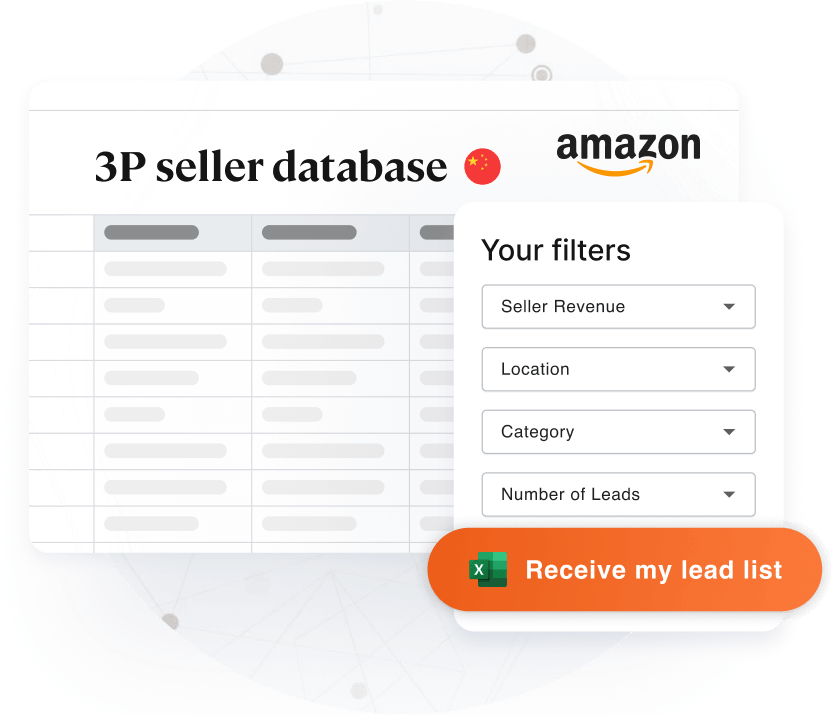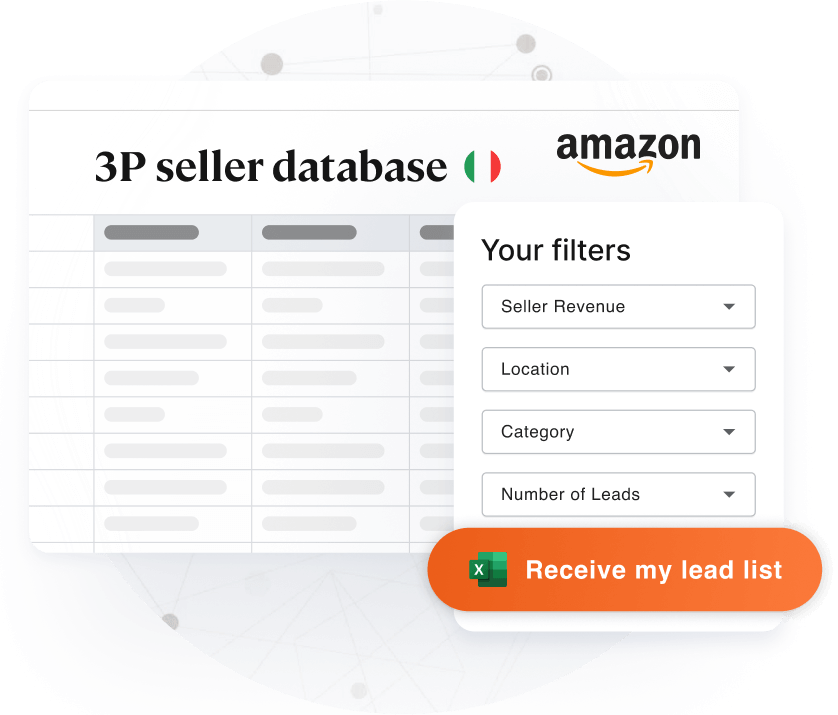SellerDirectories.com provides more than 30 datapoint on each Amazon Sellers. Below is an explanation of each datapoint and what it refers too.
| Amazon Marketplace | Data |
| Seller ID | This refers to Amazon's Unique Seller ID that is allocated to each registered account; each ID is unique. It can also be referred to as Merchant ID. |
| Private Label Seller/Wholesaler |
This identifies the the seller business model Private label: This means that the seller is selling their own product. Wholesaler: This means that the seller is selling someone else's product; that is, they purchase from the wholesaler or manufacturer and resell it on Amazon. |
| Estimated Annual Revenue in $ ( accurate +/-30%) |
It is a value that shows an estimation of the seller's revenue on Amazon. a) It is done using a third-party tool. b) The accuracy varies from seller to seller, with a precision range of +/-30%. c) The value does not reflect the seller's revenue on other marketplaces or channels of sales For example, if you see $1M, the seller may be making $1M on Amazon.com but earning a different amount on other platforms. |
| Annual Revenue Bracket [$] | This shows a bracket of the seller's estimated annual revenue by providing the upper and lower limits of the seller's revenue. |
| % of goods shipped in FBA |
This metric is a percentage defining how much of the seller's products are shipped via the FBA Program (fulfilled by Amazon) versus FBM (Fulfilled per merchant). For example, "100" means that 100% of the Seller Shipping is done via FBA. |
| Amazon Seller Page | The Amazon Seller Page is a unique URL that points to the merchant's store. It displays the merchant's name, business information, and other details such as reviews and ratings. |
| Website | The Amazon seller website domain |
| Decision Maker First Name | SellerDirectories.com provides details of the first name of the owner/CEO of each seller (seller refers to the online store) or the solopreneur behind the project. If these details are not found, we provide the first name of an executive from the company. |
| Decision Maker Last Name | SellerDirectories.com provides details of the first name of the owner/CEO of each seller (seller refers to the online store) or the solopreneur behind the project. If these details are not found, we provide the first name of an executive from the company. |
| Personal Email |
The personal email section displays a direct professional email (name@company.com) that contains a specific person's contact name from the company/seller. If there is more than one valid email address, we'll separate them with a comma (,)/ For example, joe@amazonseller.com |
| Generic Email |
A generic email account is one that terminates to a general group of recipients in the company instead of a specific person. It could be created per department, product range, project, or team. For example, sales@amazonseller.com |
| Generic Phone Number | A generic phone number is a general phone number that directs calls to a designated desk, which can then be directed to the intended recipient or for handling general office inquiries. It can be the office number or the customer service desk number. |
| Decision Maker Linkedin URL | This provides the LinkedIn URL of the provided seller's contacts. If a seller does not have a LinkedIn URL, we don't provide any in this section. |
| Seller Name | This refers to the name of the seller as shown on Amazon. |
| Seller Storefront Link | This is a link to a dedicated set of pages (storefront) that showcase the seller's products |
| Seller Business Name | The legal company name behind the seller account; some merchants also use it as the seller's name. |
| Seller Business Full Address | It shows the full address of the legal seller or company behind the Amazon store. |
| City | The detail shows the city of the address of the legal seller or company. |
| State | The state shows the territory of registration for the address of the legal seller or company. |
| Zip | It displays the Zip Code of the legal seller or company's address. |
| Seller Business Country | This detail shows the country where the seller or company is legally registered. |
| Number of Reviews [30 days] | The number of 30-day seller reviews; that is, the number of reviews from the last 30 days. |
| Number of Reviews [90 days] | The number of 90-day seller reviews; that is, the number of reviews from the last 90 days. |
| Number of Reviews [12 months] | The number of 12-month seller reviews; that is, the number of reviews from the last 120 days (12 months). |
| Number of Reviews [lifetime] | The data shows the number of reviews received by the seller during the store's lifetime (since the store's launch). |
| Seller Rating Lifetime | The score shows the seller's rating as shown on their page. The word 'lifetime' means that it is the store's average rating calculated for the whole period from its opening to date. |
| Total number of products | It refers to the number of products the seller has listed on Amazon. |
| Total number of brands |
The number of brands the seller has listed on Amazon. It is different from the number of products; for example, if a mobile phone seller has 1,000 products and only three brands, it means they sell mobile phones from 3 different brands, with 1,000 pieces collected from the various phone brands. |
| Brands | The list of brands the seller is selling on Amazon. For example, if a mobile phone seller sells three different brands, their profile lists the three specific brand names. |
| Top Product URL | This URL leads to the seller's best-seller. It could also refer to the product that shows up first on the storefront. |
| Top Product Shipping From | It displays the name of the company shipping the seller's top product. If it is by Amazon, it means that the seller is using FBA |
| Top Product Category | The dominant departement the seller is selling on. |
| Top Product SubCategory | The categories contain another subgroup known as subcategories, which shows a specific, smaller group used to identify the product. |






